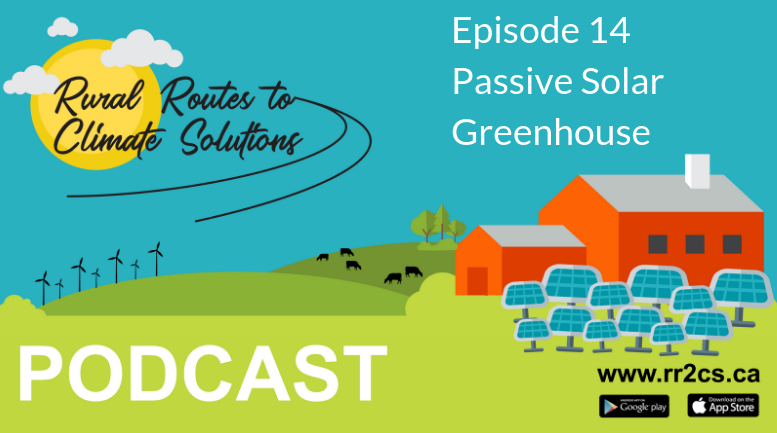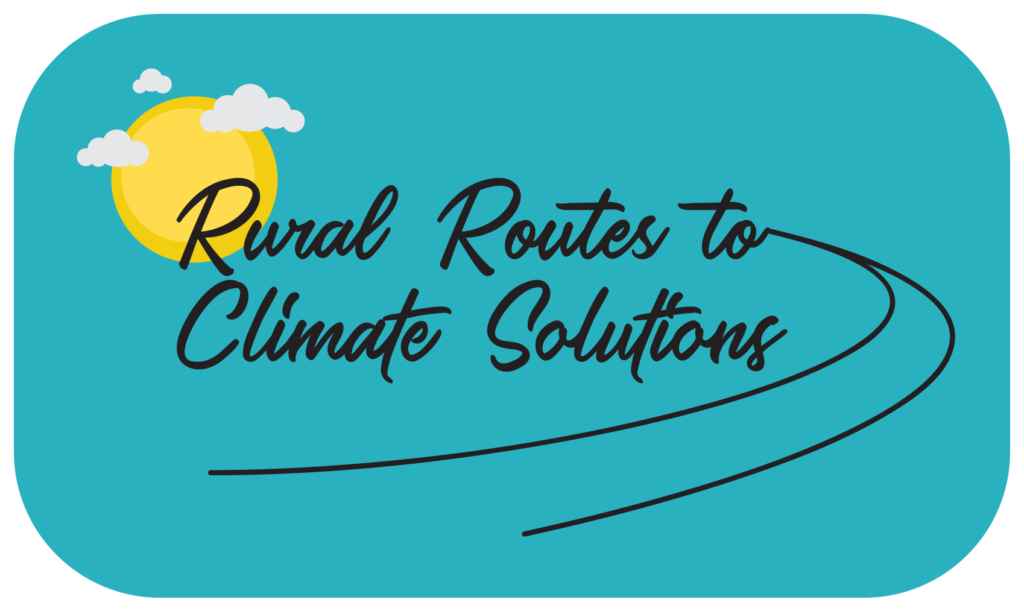Podcast: Play in new window | Download
Subscribe: RSS
Alberta has a pretty darn short growing season. Greenhouses are a must if you are vegetable producer out here. The cost of operating a greenhouse during the hard winters we have out on the Prairies can be quite, well, painful. On top of that, you’ll likely have to burn some sort of fossil fuel like natural gas or use electricity to get your seeds to germinate and keep your seedlings nice and warm on the inside of your greenhouse. There is another way though, but it does involve rethinking how we think of greenhouse growing. Passive solar greenhouses, if done right, require no external energy inputs like natural gas or electricity, but instead use the warmth of the sun, thermal mass and a lot of insulation to grow vegetables. This design helps to dramatically decrease your heating bill and the carbon footprint of what you are producing.
In this episode, Daniel Chappell, a professional horticulturist, instructor at Olds College and farm manger at Shirley’s Greenhouse in Didsbury takes you through what can and cannot be produced in a passive solar greenhouse and how to design and operate this type of set up.
Highlights:
(6:17) Passive solar greenhouses are designed to take care of the passive gains that sunlight, or solar radiation, gives to us throughout the day. The goal of a passive solar greenhouse is to collect as much solar radiation from the sun in the form of heat, so that you can take advantage of it later to prevent the greenhouse from freezing. This design greatly reduces or eliminates the cost of heating a greenhouse throughout the colder months and allows a vegetable grower in Alberta to grow a diverse selection of crops year-round at lower production costs.
(23:10) Passive solar greenhouses are designed with the east, west, and north walls extremely well insulated. The south wall is straight and angled so that the sunlight hits the plastic as perpendicular as possible. In many parts of Alberta, this requires a 70 degree angle to best capture the heat from the sun.
(26:57) To store the heat long-term once it is trapped inside a passive solar greenhouse, a thermal mass is used to hold the heat throughout the day and release it slowly overnight as the temperature drops. Water is one of the most efficient thermal masses available for a passive solar greenhouse design and 1000L totes work as a really great storage system.
(37:59) Constructing a temporary “greenhouse-within-a-greenhouse” system such as an additional layer of plastic overtop of plants helps to slow down the freezing of the plants in the coldest months of the year. Other gardening methods used to prevent frost or extend a growing season, such as insulated blankets overnight, also work to prevent freezing in the coldest months.
(42:00) Insulation is by far the biggest (and most important) upfront cost in a passive solar greenhouse, even when using salvaged building materials. While the initial set up costs of a passive solar greenhouse are higher than a traditional greenhouse, the cost of heating a traditional greenhouse throughout the colder months quickly adds up over time. This results in huge operational savings over time in a passive solar greenhouse design because of the greatly reduced or eliminated heating costs.
Want to learn more? Check out our episode on On-Farm Geothermal with Dr. Jonathan Banks of the University of Alberta.


